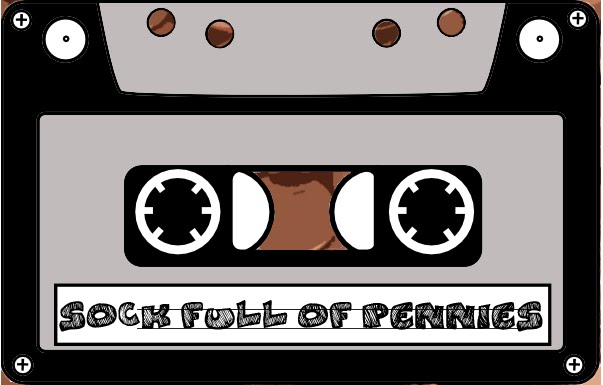As I try to peer into my increasingly-foggy youth, I realize that my very first introduction to punk music of any sort was via early Green Day. I was maybe ten years old, standing in the room of my friend’s older brother as he put on “Nice Guys Finish Last.” Just standing, just listening, just loving it. A few days later, I managed to borrow Nimrod and Dookie to burn my own copies, discs which have not worked for almost a decade now due to overplay.
I knew I liked Green Day then, and I liked them A LOT. So years later, when I was finally old enough to purchase my own CDs and found myself browsing the “G” section at Walmart (undoubtedly on a fruitless search for more Goldfinger), I found the “Green Day” tag and sifted through the cases, pulling out an album of theirs that I hadn’t yet heard, one that would change entirely the way I thought about music: Insomniac.
As their third full-length and second major-label release, no one would have been surprised to see Green Day repeat the successful, accessible sound of their previous record, but that is exactly what the band avoids on Insomniac. Tré Cool lays into every single drum beat with fervor and fury, driving the tunes at tempos that mainstream radio had never even approached before. Billie Joe Armstrong thrashes his guitar strings, his tone soaked in distortion. He completely ignores even the concept of a guitar lead, favoring simple and biting power chords—and so Mike Dirnt’s rumbling bass fills that void, running through bright yet brooding basslines in “Stuart & the Ave” and “Stuck with Me."
While there is no lack of the pop sensibility that endeared them to the world, Green Day focuses the sound of Insomniac through the infuriated energy of their punk rock roots. And yet, Insomniac remains the band’s darkest release, and shows them testing the limits of the genre in which they began. “Geek Stink Breath” and “Brain Stew” feature slow, chugging progressions drenched in distortion and low frequencies, adding a morbid depth to their historically pop sound. “Panic Song” takes off with an extended jam intro, Dirnt frantically strumming a single screaming note while Armstrong and Cool crash against each other for two full minutes before launching into the song proper. Even the cover art features a layer of the strange and sinister, an adaptation of a Winston Smith collage entitled “God Told Me to Skin You Alive.”
Insomniac chronicles a step in Green Day’s evolution, the meat of which is contained in Billie Joe Armstrong’s lyrics. Billie Joe is no longer singing about getting stoned, masturbating, or dreaming of distant girls; “Geek Stink Breath” tackles the destructive results of his methamphetamine use, while “Brain Stew” furthers the horrid after-effects of one of those benders. Many songs feature a bleak self-reflection: Billie Joe labels himself as “my own worst friend / my own closest enemy” in the opener “Armatage Shanks,” while further ragging on himself in “Bab’s Uvula Who?” with the line: “I’ve got a knack for fucking everything up.”
Green Day’s Insomniac was written during a confusing and violent life upheaval for the band, a paradigm shift from which their abrasive instrumentation and darker lyrics are bred. Their previous release Dookie, being both their major-label debut and a monster hit, had propelled the trio into stardom overnight, a veritable accident. And yet the fact that they had attained it, even through dumb luck, led to their expulsion from the DIY punk scene at 924 Gilman Street, which had been their home and family since their high school days. Suddenly, Green Day stood in the spotlight of the world, completely abandoned and derided by their once-musical peers.
This sudden disconnection from the reality of their lives is the main theme that they explore through Insomniac. Despite having changed literally nothing but their distributor, the band fell ass-backwards into fame and new fans, and so lost the support and credibility of their old fans. And rather than fawn to either side, Green Day wrote Insomniac, a resounding “fuck you” to literally everybody. The sound is abrasive, raw, borderline violent—exactly the antithesis of radio. And yet their lyrics tell all the old, stuck-up punks from Gilman to piss off as well: “86” mocks the “holier-than-thou” attitude of their former friends, while “No Pride” calls out the hypocrisy of the punk scene with the lines “You better digest your values / cause’ they turn to shit” and “No culture’s worth a stream of piss / Or a bullet in my face.”
Insomniac is a record about frustration and fury, about being stuck in a situation never asked for, and no song captures the complete insanity of that situation better than the album’s punk banger, “Jaded.” Clocking in at a minute and a half, “Jaded” was tacked onto the third single, “Brain Stew,” because of the crossfade between the tracks, and thus received far more promotion than it ever would otherwise. Amid a breakneck pace set by Tré Cool’s thumping kick drum, Billie Joe and Mike Dirnt give their strings the beating of a lifetime as they thrash and scrape. The instrumentation feels like a building about to collapse, yet the band holds it together long enough for Billie Joe to deliver his ranting, raucous lyrics.
Immediately, the loss of control is made apparent: “Somebody keep my balance / I think I’m falling off” before commenting on the meaninglessness of at even attempting to control the situation in the chorus: “Always move forward / Going ‘straight’ will get you nowhere.” “Jaded” is Green Day’s swift kick to the face of fan and foe alike, a deriding commentary towards the bizarre situation they’ve ended up in, as well as their complete lack of interest in taking a side.
Whatever your view of Green Day, if you give Insomniac a chance, you will find at least a true sincerity that most bands would sell their souls (and have already) to mimic, let alone embody. These three goofballs perform the most punk-rock of all actions by creating a record so unforgiving and unrelenting in its honesty that both the mainstream and the underground refused to accept it (just check out this angry letter written to Billie Joe, as well as his cheeky response). It is this record that showed me how to be true to oneself, wholly disregarding critics and sycophants and idols to create something that is simply and brutally the soul. Even if it is somewhat juvenile, bleak, or even nihilistic, Insomniac forces the listener to reevaluate the musician’s target of their music—the listener, or the creator—and that is a topic no other record even dares to approach.
Tunes to Check Out:
2) Panic Song

